Shaw Lodge Mills
A brief history of this icon of the textile industry in the Halifax area
The firm of John Holdsworth & Company was founded in 1822 by John Holdsworth, whose family were already woollen textile manufacturers and merchants in Shibden then in Halifax. They specialised in worsted cloth, produced by hand loom weavers, but developments in mechanised spinning led in 1822 to John Holdsworth establishing his first spinning mill to join a growing number of worsted spinning mills in Halifax. The location of this is uncertain, but by 1825 he was purchasing land at Shaw Lodge and his first mill on the site is dated to 1830. This is the extant 'No 1 Mill' on the present site.
Further developments in the industry led to the gradual mechanisation of the weaving part of the process, and the first power loom weaving shed was begun at Shaw Lodge in 1844. This was accompanied at around the same time by further spinning mills and, in 1852, by an extension to the weaving shed. The No 2 Mill, dated to between 1831 and 1839, was to the south of the extant buildings, and at right angles to them leading eastwards to the Hebble Brook. It is unclear whether what is named as No 3 Mill and dated 1850 in a plan of 1925 was built as such, as earlier plans call it a warehouse, though it was certainly in existence by 1855, standing to the north of and adjoining No 1 Mill.
The mills appear to have been steam powered by 1839, with separate engines for each of the two mills. By 1855 a separate engine house, boiler house and chimney were built on the eastern side of the site, with underground power connections to the mills. By this time, the firm had invested in Jacquard looms and in 1851 won a medal at the Great Exhibition for their worsted cloths. Branches in Bradford and London were run by members of the family, and John Holdsworth had a house, Shaw Lodge, close by the western side of the site, now demolished.
Continuing prosperity led to the construction of the 7-storey warehouse to the north of No 3 Mill in 1862, and the separate office block with adjoining stable in 1865. The offices were designed by Sir Charles Barry. A workshop and shed at the north end of the site, and a tower and timekeepers office at the northern end of the weaving sheds were added in 1876.
Since then, alterations to the buildings have included the loss of the No 2 Mill and the southern end of No 1 Mill, the reconstruction of the stables, extensions to the engine house and boiler house, and the reroofing of most of the weaving sheds and mills. The firm continued to operate up to 2008, having survived the demise of most woollen manufacturing in the country, specializing in the production of moquette for the bus and coach trade. However, following purchase from the Holdsworth family, production ceased. The buildings now have a wide variety of uses, with small businesses, an art gallery and an indoor football complex replacing the looms.
With thanks to Historic England for the information, for more detail please visit their website here
There is a website dedicated to the steam engines used in the mill that can be accessed here
There is a dedicated page on the Holdsworth family and business to be found, here: Malcolm Bull's Calderdale Companion : FoldoutRelated pages...
Calderdale Royal Hospital
more The main Hospital for the the town

The Shay Stadium
more The home of professional sport in the town

Eureka! The National Children's Museum
more A popular children's museum
The Halifax Building Society
more Headquarters of the eponymous financial institute
_1.jpg)
Wainhouse Tower
more A victorian "Folly"
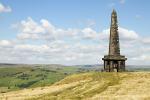
Stoodley Pike
more A war memorial in the Todmorden area
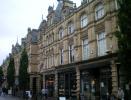
The Halifax Borough market
more The victorian covered market in the town centre
_1.jpg)
Square Church Spire
more The spire is all that remains of this church
_1.jpg)
The Piece Hall
more Halifax's jewel in the crown
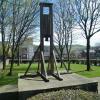
The Halifax Gibbet
more A forerunner of the Guillotine
Halifax Town Hall
more Seat of Local Governance

Halifax Minster
more The centre of worship in Town

Dean Clough
more An industrial powerhouse of the past
_1.jpg)
All Souls Church
more The church of a former model village
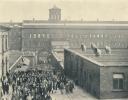
Black Dyke Mills
more An icon on the outskirts of Halifax
back to page above this...
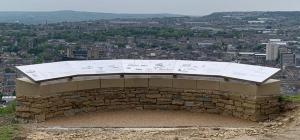
The Centenary Viewing Platform at Beacon Hill
back To celebrate 100 years of service to the town of Halifax we have commissioned viewing platform on Beacon Hill overlooking the town. Situated on the Magna Via, an old packhorse route, the walk to the top is worth it.